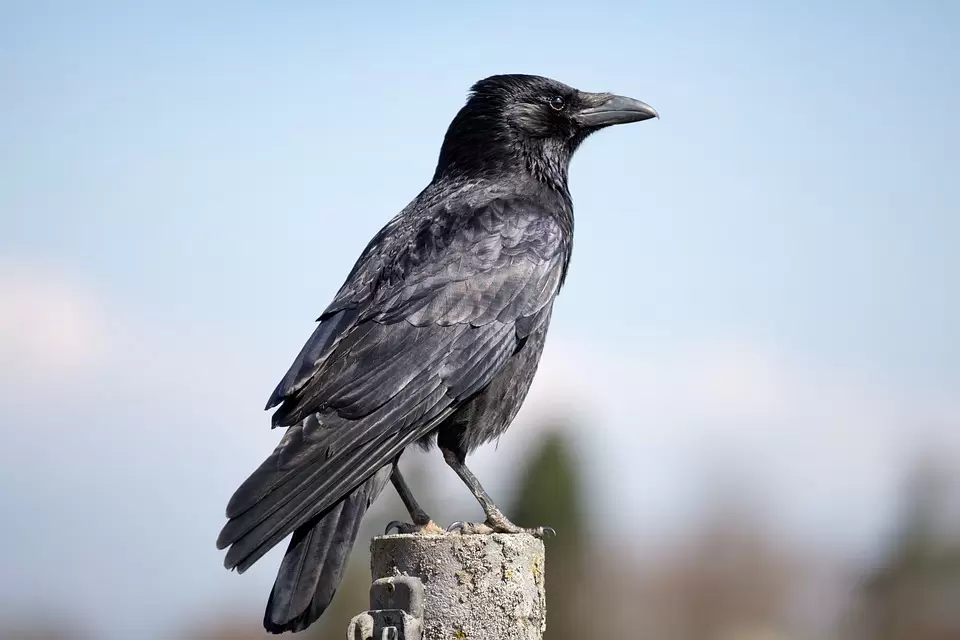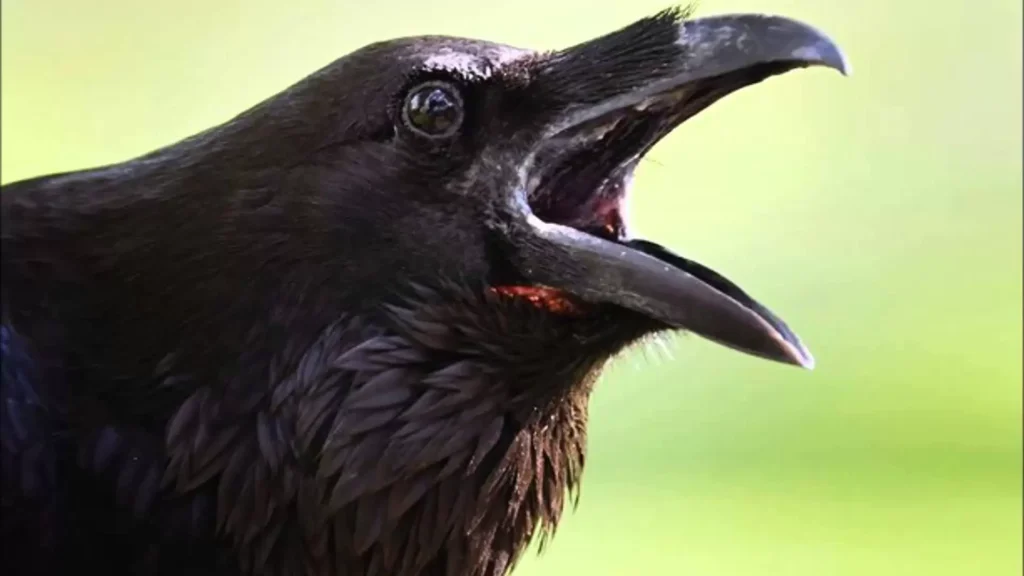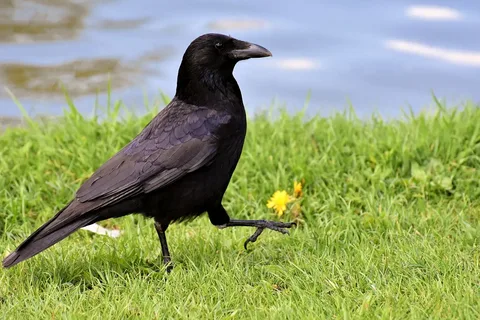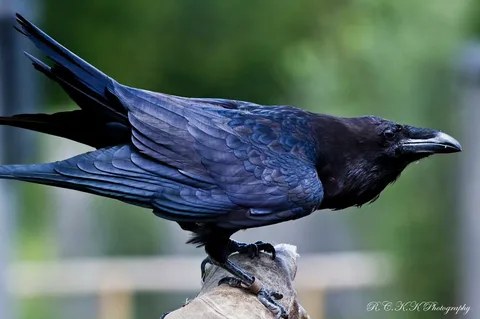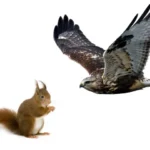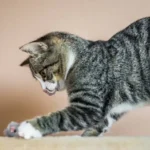For those fascinated by corvids’ clever problem solving abilities and playful personalities, the idea of welcoming a raven into the home as a companion seems incredibly appealing.
However, these large jet black birds are far from your average parrot or parakeet when it comes to the level of care, housing demands, training needs and lifetime commitment required.
Let’s explore the pros and cons of raven as a pet guardianship in greater depth to help determine if they are the right pet for your lifestyle.
The Intelligent Appeal and Challenging Nature of Ravens As A Pet
Ravens as a pet rank among the most intelligent animal species on Earth, rivalling primates in cognitive tests according to researchers.
Studies have demonstrated their advanced capacities for tool use, communicated deception, social learning and innovative problem solving.
They even appear able to count small quantities and do simple maths.
These ingenious corvids never cease to amaze guardians with creative new behaviours and the diversity of objects they manipulate in their environment.
Their bright, curious minds also mean keeping ravens entertained presents an immense, ongoing task for humans.
Without sufficient mental and physical stimulation through foraging toys, puzzles and training sessions, these birds can grow bored and act out in dangerous or destructive ways.
Their penchant for dismantling zippers, pulling up baseboards and chewing through wiring has earned them a reputation as little feathered terrorists among uninformed folks! Truthfully, ravens just require constant enrichment to feel fulfilled just like humans crave fun and purposeful activities in daily life.
Proper “raven as a pet proofing” of the home where they’ll spend time unsupervised is therefore an absolute necessity.
All messy or breakable valuables, small ingestible items, electrical/toxin hazards and loose carpeting/furnishings posing risk of injury must be securely stored away or raven friendly alternatives found. Window screens demand extra strength to withstand beak and foot perseverance as well.
Considering how much time guardians will need to dedicate preventing mischief and resolving conflicts peacefully makes raven care quite demanding even before factoring in their extremely lengthy lifespans.
A Multi-Decade Commitment
When it comes to ravens as a pet’ natural lifespan, we’re talking on the scale of chimpanzees and parrots a huge responsibility. In human care, these corvids average 15 to 30 years of age, with some records beyond 40
.While incredibly rewarding to witness their bright personalities develop complex new techniques and vocabulary over years, such longevity demands adopters plan well.
Successful husbandry across generations requires identifying succession caregivers in advance willing to thoroughly research the breed and ideally familiarize themselves gradually with the individual bird.
Finances too must foresee inflation adjusted funding for top quality veterinary care, housing maintenance/upgrade costs and premium whole foods over many decades ahead.
Commonly, young raven as a pet adopters understandably fail to realistically factor these obligations, sadly leading to neglect or relinquishment of elderly birds after their primes.
Concerns in Captivity
Ethical considerations also arise for potential raven guardians regarding wild-caught versus captive bred standards of living.
Though intelligence remains the same, captive habitats cannot fully replace a raven’s natural ranges and social bonds.
While human interaction provides enrichment, it’s no substitute for flock dynamics in the skies. Additionally, biosecurity risks persist with any corvid carrying potential diseases transmissible between wild bird populations and humans/pets when in close contact.
Overall raven welfare weighs heavily on the conscience for lifelong dedication to physical/mental health in a carefully prepared domestic setting.
Legal Hurdles Facing Guardianship by Region
Federal laws in the USA under the Migratory Bird Treaty Act allow keeping corvids only with proper permitting and regulation, while many states institute additional restrictions or bans. Examples include:
- Alabama – Outright prohibited as domestic pets.
- Arizona – Permitted if captive-bred without license.
- California – Licensed through CA Dept. of Fish & Wildlife.
- Maine – Requiring scientific or educational state permit.
- New York – Banned by the state due to wildlife impacts.
- Texas – Allowed with USDA Class C Exhibitor certification.
Obtaining healthy, captive bred ravens legally often means navigating a maze of wildlife agency paperwork across multiple jurisdictions.
Wild captured individuals pose further challenges to ownership due to rehabilitation permits.
Overall the permitting process represents a significant hurdle for those unprepared, underscoring the extensive commitment and responsibility raven adoption demands.
Caring for Raven As A Pet Long Term
Given the intensive nature of raven guardianship, let’s delve deeper into recommended standards.
Top considerations include housing, training, diet, enrichment and preventative healthcare practices owners must uphold to keep these intelligence powerhouses safe, mentally stimulated and in good health for the many long decades of companionship ahead.
Housing
Indoor flight cages should be a spacious minimum 6x6x6 feet individually or larger for multiple birds, constructed of durable wire/mesh rated for strong beaks and non toxic, easy to clean materials.
Multiple large perches, platforms and textures offer mental exercise and physical activity areas.
Outdoor aviaries for exercise ideally surpass 8x8x8 feet dimensions to allow ample wing flapping and protected roosting shelters.
Training
Setting aside 15 to 30 minutes daily for positive training utilizing high value treats to reinforce basic commands like “step up”, recall and safe handling forms the foundation.
Gentle restraint techniques and harness conditioning help ravens feel comfortable coming/going from protected spaces willingly through positive association rather than fear of being caught.
Patience and consistency yield swift results with their eager to learn nature. Then you can train a Raven as a pet
Diet
A complete, rotating menu for a raven as a pet including quality pelleted feed, fruits/veggies, grains, seeds, nuts, eggs and small portions of meat based on established nutritional guidelines sustains ravens’ natural foraging instincts and physiology.
Calcium, vitamins and GI health supplements round out needs not met in captive diets alone. Fresh water must always be available.
Enrichment
Rotating stimulus toys, foraging tools and environmental adaptations mentally fatigue these clever corvids. Puzzle feeders, destructible chew sticks, shred able ropes/branches fill their instincts to “work” for food discoveries.
Outdoor play sessions under supervision grant exercise. New trick training, vocal mimicry, music and socialization opportunities further prevent boredom and associated distress.
Healthcare
Comprehensive annual vet checkups monitor weight, body condition, beak/claw growth, feather health, eyes/ears and catch any developing medical issues early through bloodwork and faucal analysis.
Emergency funds and an established avian friendly veterinarian prepared for their unique medical needs provides stability.
Preventative measures reduce common household ailments and zoonotic disease transmission risks.
Overall, successful raven guardianship demands lifetime dedication rivalled only by caring for endangered species in human facilities.
But for those prepared to enrich these remarkable birds through safe, intellectually stimulating environments and nurturing bonds despite challenges, the rewards of companionship with a raven can last a lifetime many times over.
A raven as a pet bright, playful natures leave lasting joy for all carefully considering adoption of such a special, long term feathered family member.
FAQs
Q: Are ravens friendly to humans?
A: Humans are occasionally attacked if they get close to a raven nest, though serious injuries are unlikely.
Q: Is a ravens a good pet?
A: Ravens don’t make good pets under any circumstances.
Q: How long does a pet raven live?
A: Between 40 or 50 years of age
Q: What do ravens eat?
A: Arthropods, grains, and fruits.
Conclusion
While ravens offer unparalleled intelligence and personality as potential companion animals, their needs require by far the most commitment compared to other pet bird species.
Their natural instincts for constant problem solving stimulation, powerful beaks and feet, potentially dangerous distress behaviors if bored, and extensive lifespans spanning decades necessitate a fully prepared guardian dedicated to going above and beyond standard care routines.
Only those willing and able to provide severely enriched physical and mental environments, positive long term training, expert veterinary care, substantial financial resources and quality time each day should consider undertaking the challenge of raven guardianship. It is certainly not a responsibility to enter into lightly.
